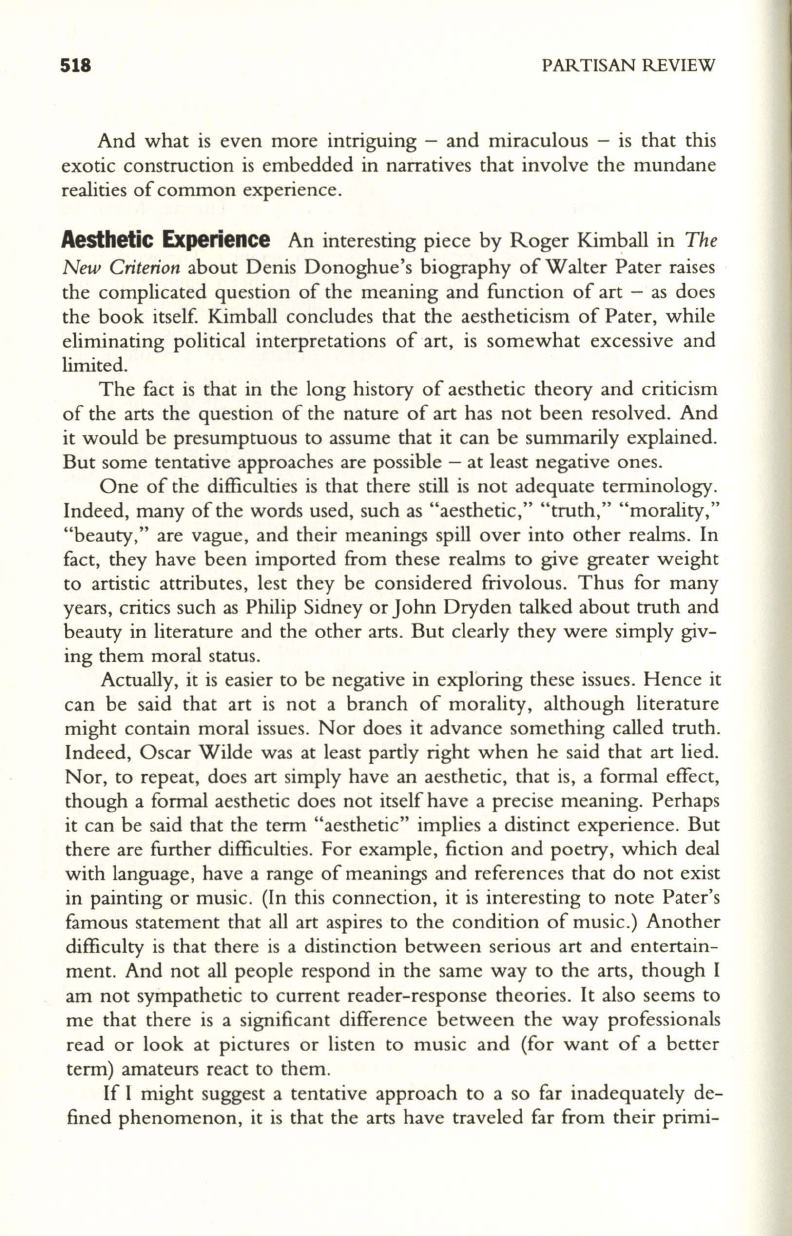
518
PARTISAN REVIEW
And what is even more intriguing - and miraculous - is that this
exotic construction is embedded in narratives that involve the mundane
realities of common experience.
Aesthetic Experience
An interesting piece by Roger Kimball in
The
New Criterion
about Denis Donoghue's biography of Walter Pater raises
the complicated question of the meaning and function of art - as does
the book itself Kimball concludes that the aestheticism of Pater, while
eliminating political interpretations of art, is somewhat excessive and
limited.
The fact is that in the long history of aesthetic theory and criticism
of the arts the question of the nature of art has not been resolved. And
it would be presumptuous to assume that it can be summarily explained.
But some tentative approaches are possible - at least negative ones.
One of the difficulties is that there still is not adequate terminology.
Indeed, many of the words used, such as "aesthetic," "truth," "morality,"
"beauty," are vague, and their meanings spill over into other realms. In
fact, they have been imported from these realms to give greater weight
to artistic attributes, lest they be considered frivolous . Thus for many
years, critics such as Philip Sidney or John Dryden talked about truth and
beauty in literature and the other arts. But clearly they were simply giv–
ing them moral status.
Actually, it is easier to be negative in exploring these issues. Hence it
can be said that art is not a branch of morality, although literature
might contain moral issues. Nor does it advance something called truth.
Indeed, Oscar Wilde was at least partly right when he said that art lied.
Nor, to repeat, does art simply have an aesthetic, that is, a formal effect,
though a formal aesthetic does not itself have a precise meaning. Perhaps
it can be said that the term "aesthetic" implies a distinct experience. But
there are further difficulties. For example, fiction and poetry, which deal
with language, have a range of meanings and references that do not exist
in painting or music. (In this connection, it is interesting to note Pater's
famous statement that all art aspires to the condition of music.) Another
difficulty is that there is a distinction between serious art and entertain–
ment. And not all people respond in the same way to the arts, though I
am not sympathetic to current reader-response theories.
It
also seems to
me that there is a significant difference between the way professionals
read or look at pictures or listen to music and (for want of a better
term) amateurs react to them.
If I might suggest a tentative approach to a so far inadequately de–
fined phenomenon, it is that the arts have traveled far from their primi-


